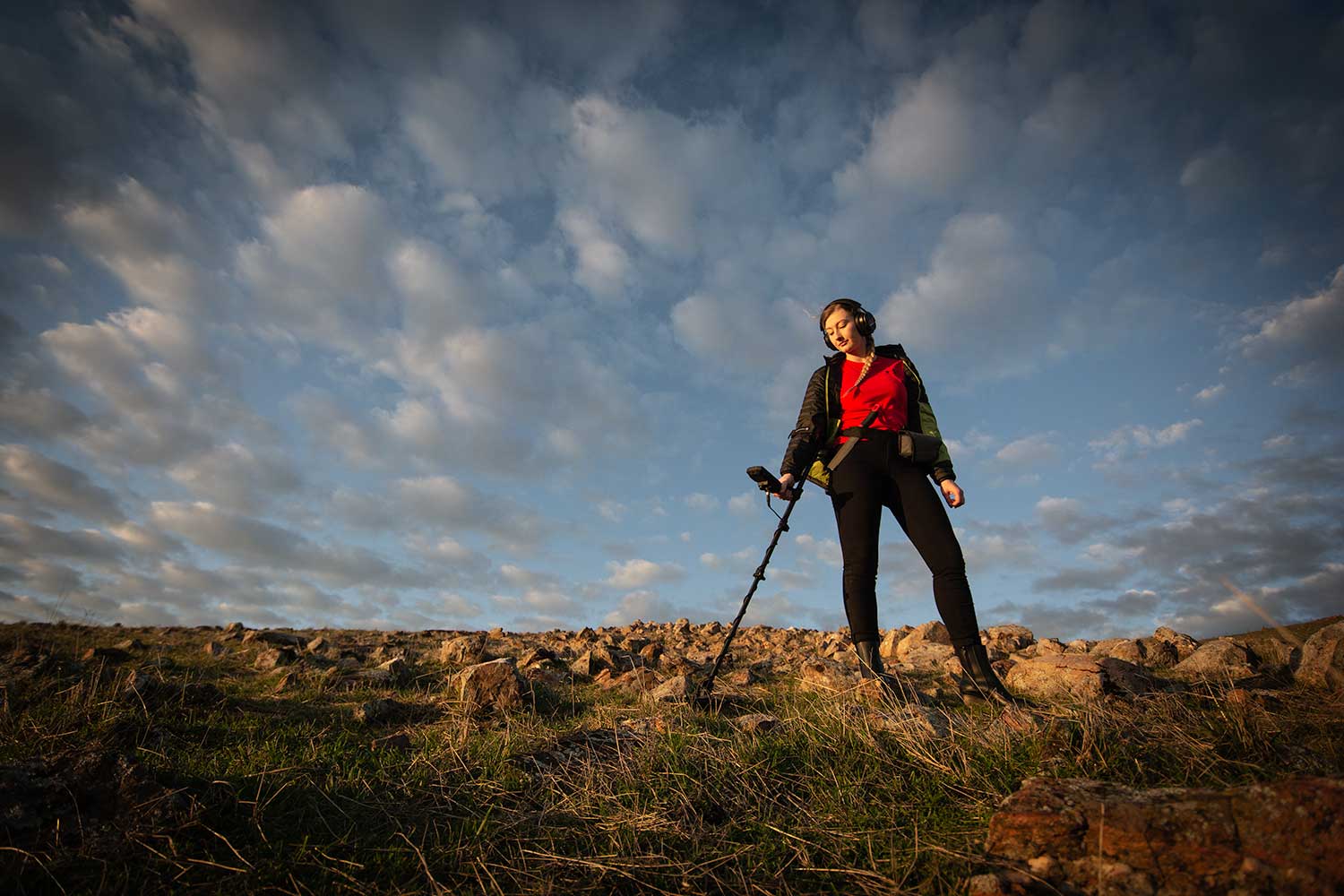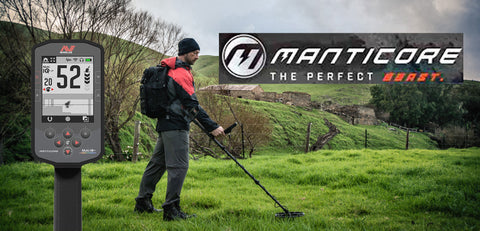
What are the Minelab Manticore Features? My Notes
This article is my notes on the Manticore Features. We compare the Equinox and XP Deus 2 vs the Manticore in terms of how the features compare.
Anything I did not make note on I did so because it’s either older tech, or relatively straightforward. The Manticore definitely has some intriguing new features. However, until I get it in my hands and test the accessibility and versatility of these features I cannot definitively say whether they are actually helpful or not.

The Manticore Frequencies
Multi-IQ+, 5kHz, 10kHz, 15kHz, 20kHz, 40kHz
It is strange that Minelab would not make a 4kHz feature for the Manticore seeing how popular it was on the Equinox. Or why Minelab didn’t allow for variable single frequencies like the XP Deus offers.
Noise Cancel
Auto, Continuous Auto, Manual (-9 to +9). Continuous Auto will be interesting to hear more about. Minelab is claiming that the Manticore is very EMI-Resistant.
Ground Balance
Auto, Manual, Tracking
Ground Balancing the Manticore might not do you any good says the lead Minelab engineer. He states that ground balance may help you get a little more raw depth, but at that depth you don't even know what your target is (fringe depth). Ground balance he says does not help with discrimination though.
Sensitivity
1-35
Target ID (Identification)
0–99 with “Ferrous Indication”. This is an interesting change. As with the XP Deus 2, iron is not represented by negative numbers like it is on the Equinox. This can be extremely confusing because iron is coming in as a positive number unless it is somehow changed; either by notching it out, or, by changing the ‘pitch’ or the sound frequency of particular iron segments.
The problem then arises: What TID numbers actually represent the scale of iron? Well, when I began with the XP Deus 2, I had to test many pieces of iron until I had nailed down (pun intended) the answer. With the XP Deus 2 I changed the pitch of TID numbers 1-10 to SOUND like iron– again, changing the sound frequency/pitch.
I did not want to actually discriminate out iron completely by notching it out– because any experienced detectorist knows you need to be able to hear your iron to better discern whether what you have under your coil is a iron-false signal (iron halo) or a deep non-ferrous target (specifically silver).
Next, I turn my iron volume down so I can hear it, while keeping my non-ferrous TID numbers (11-99) at a normal volume. Turning my iron down allows me to hear the iron without it blowing my ears out all day.
Will the new “Ferrous Indication” feature be a new feature that helps with this issue? The Manticore does come with Ferrous Volume (0-25), and Ferrous Pitch (0-50) features.
Ferrous Limits is just the new term for Iron Bias
Upper 0-14 | Lower 0-9
Ferrous limits Custom
1-4

The Manticore Iron Horseshoe Dilemma
Here is the strange thing: There is a horseshoe button on the Manticore….
When you press the Horseshoe button on the Equinox, you either hear your iron or you don’t. Pressing the button single handedly wipes out all iron tones and “NEGATIVE” TID numbers, or it makes them audible again.
What TID numbers does the Horseshoe button represent on the Manticore then?
As convenient as the Horseshoe button is, it worries me that Minelab has some predetermined ‘positive’ TID numbers they believe iron represents. My point being– I don’t like companies telling me what numbers to discriminate out.
The Benefits of a Larger TID (Target Identification) Scale
The larger TID scale on the XP Deus 2 is a blessing in disguise. Here’s why:
The Equinox has a very compressed TID scale of only 1-39. Until I started using the XP Deus 2, I didn’t realize how inconvenient this was.
Having a smaller TID scale forces the detector to compress alloys closer together. So in other words, small junk foil will ring up the same as gold jewelry.
However, watching elaborate gold tests along with my own tests on the Deus 2 revealed that gold falls much higher with a larger TID scale (TID 30-40 and above!). Whereas small aluminum mostly falls below TID 30-40.
On the Equinox you will dig gold rings down to TID 2–10!
Think of the incredible space you have now to filter out trash that wasn’t there before with a compressed TID Scale. That is exactly why Minelab increased those TID numbers from 0-99 on the Manticore.
Now, of course you are going to dig some large aluminum and pull-tabs, but I even have some secrets for discriminating some of that without notching anything out!

Manticore 2-Dimensional TID Map
The Manticore 2-D simulated TID map has target trace, and reportedly gives you an actual ‘shape’ of your targets.
Now, for anyone who used the CTX 3030, you would know target trace is nothing new. Target trace was a color-coated animated feature that would show you multiple targets on the screen at once. Non-ferrous targets would emerge as more solid, whereas ferrous targets would smear across the screen.
This is very similar to the XP Deus XY screen in that non-ferrous targets represent more solid lines, and ferrous targets are represented as more chaotic lines.
Both the CTX and the Deus 2 features are simply different methods of giving you new information about your target.
The question is: has Minelab changed anything about this feature? To be honest, the CTX and Deus 2 features lose accuracy at greater depths. It will be interesting to see if Minelab has corrected this.

Target Tones
1, 2, 5 Tone | 1, 2, 5, Region All-Tones.
This is an EXTREMELY disappointing feature. I would expect Minelab to include 3 and 4 tones. This feature essentially means I have to go in and change the tone breaks in 5-tone like I do in the Equinox to make my machine either a 3 or 4 tone machine. “Region All-Tones” has not been described yet so we need more info on that.
Target Volume
0-25
Target Pitch
1-50 This is different from the XP Deus 2 so it will be interesting to see what frequencies 1-50 actually represent.
Audio Themes
Normal, Enhanced, Continuous Pitch (for the gold mode)
Volume Profiles
Simple (like the Vanquish), Medium (Like the Equinox), Rich, Overdrive, Enhanced (Suppresses EMI & Ground Chatter)
Some of these terms are relatively new and will need more explaining by Minelab.
Threshold Level
0-25
Threshold Pitch
0-50
Recovery Speed (Minelab added 0 on the Manticore for those who want to go super deep and slow)
0-8

